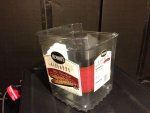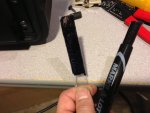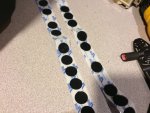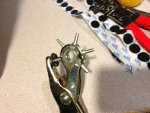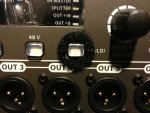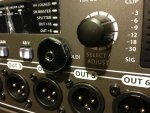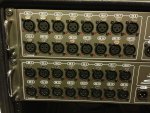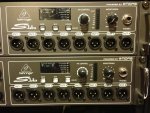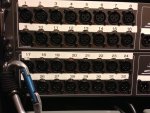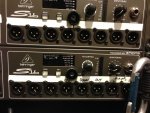Re: AC and signal cable of whatever type
Hey Dan, I am equally as frustrated as you with this mystery issues that have cropped up with the system as well as the proper cable configuration, however you can't really blame Behringer for possibly your lack of research on the topic. I know you have made a significant investment in this product as have I, and in doing so, I read until my eyes bugged out about what is the best cable to get blah blah , and opt'd to get the best cable I could afford (or rather amount of $ I was willing to shell out for it).
I assumed that regular cat 5 wasn't going to cut it, and knew that was BS if anyone ever uttered those words. I haven't tried my system live yet, and the only issue I've had to date is the audio cutting out when I stepped on a regular cat 5 cable when testing the system in my basement.
I wish it wasn't the case - but I'll be treating my tactical cat5 cable as if it were a multicore snake when I'm out on a gig. There will be cable mats and there will be a/c run from the stage out to FOH. I'm thinking the only benefit at this point is the lack of weight involved in a multicore snake.
Because this cable is fairly cheap I went with two options ( 150ft and 260ft), that way I won't have any cable lying on a reel creating any issues on short run gigs...
I am glad you are fighting the good fight, but don't forget to take a little stock in your decisions too (good or bad).
Dan Mortensen;52483 So it would seem that you are at least four months late to the party .[/FONT said:[/COLOR][/COLOR]
Hey Dan, I am equally as frustrated as you with this mystery issues that have cropped up with the system as well as the proper cable configuration, however you can't really blame Behringer for possibly your lack of research on the topic. I know you have made a significant investment in this product as have I, and in doing so, I read until my eyes bugged out about what is the best cable to get blah blah , and opt'd to get the best cable I could afford (or rather amount of $ I was willing to shell out for it).
I assumed that regular cat 5 wasn't going to cut it, and knew that was BS if anyone ever uttered those words. I haven't tried my system live yet, and the only issue I've had to date is the audio cutting out when I stepped on a regular cat 5 cable when testing the system in my basement.
I wish it wasn't the case - but I'll be treating my tactical cat5 cable as if it were a multicore snake when I'm out on a gig. There will be cable mats and there will be a/c run from the stage out to FOH. I'm thinking the only benefit at this point is the lack of weight involved in a multicore snake.
Because this cable is fairly cheap I went with two options ( 150ft and 260ft), that way I won't have any cable lying on a reel creating any issues on short run gigs...
I am glad you are fighting the good fight, but don't forget to take a little stock in your decisions too (good or bad).

